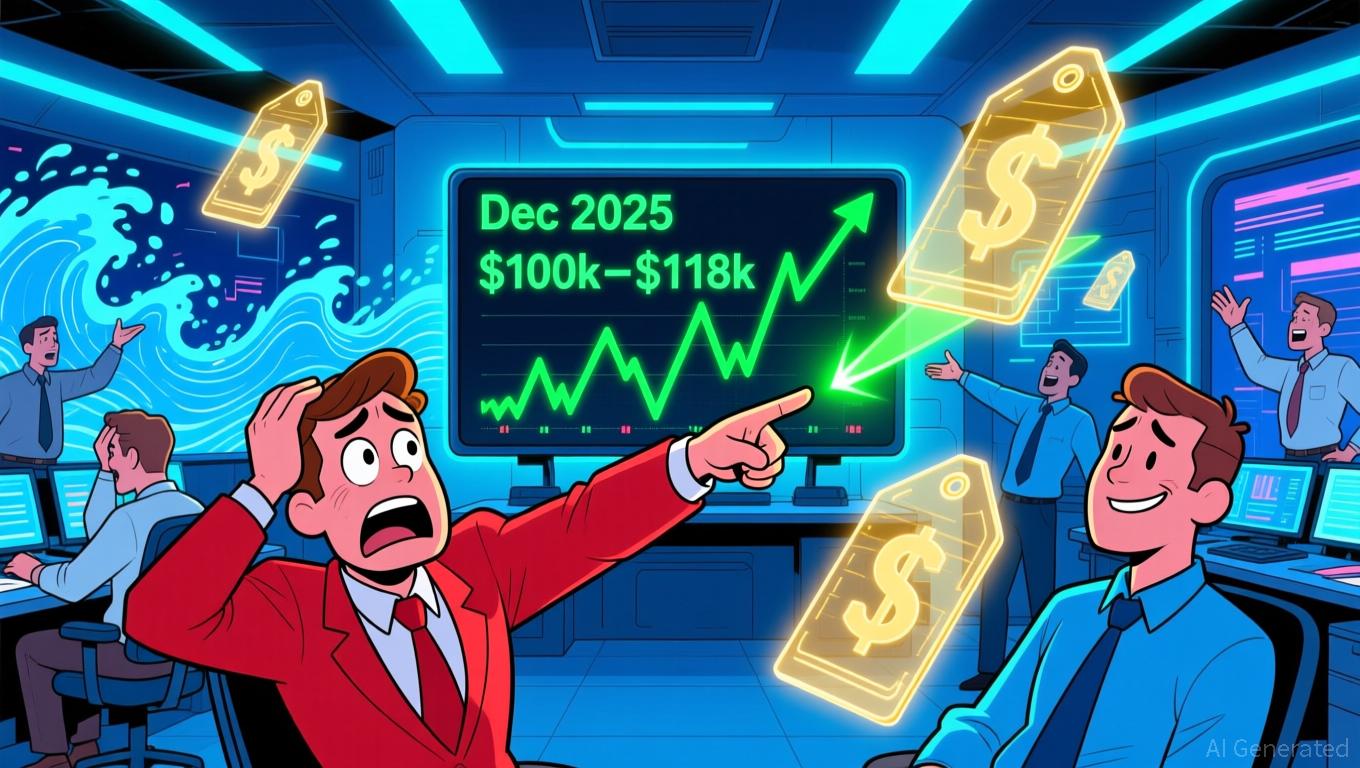The MMT Token TGE and What It Means for New Blockchain Ventures
- 2025 blockchain industry faces dual narratives: institutional-grade innovation (MMT Token) and speculative chaos (Melania Meme Token). - MMT Token (Sui-based) gains institutional backing and regulatory alignment, using buybacks/burns to stabilize liquidity and attract $12B DEX volume. - Melania MMT collapses 99% due to centralized control (89% supply in single wallet), exposing risks of governance flaws and regulatory scrutiny. - Emerging projects must prioritize compliance, sustainable tokenomics, and r
By 2025, the blockchain sector is defined by two contrasting themes: advanced institutional progress and rampant speculative activity. The
The MMT Token TGE: Institutional-Grade Advancement
The MMT Token TGE, operating on the
Performance indicators further validate its achievements:
Speculative Token Dangers: The Melania
Meme
Token (MMT)
On the other hand, the Melania Meme Token (MMT) illustrates the dangers of speculative memecoins. After briefly reaching $13.73 in 2025, its value plummeted by more than 99% to $0.1004, largely due to centralized ownership (with 89% of tokens in one wallet) and a lack of transparent governance
The existence of both MMT tokens reflects a broader pattern in the industry: while institutional DeFi and tokenized real-world assets (RWAs) are gaining momentum, speculative ventures remain at risk due to market mood swings and poor governance.
Takeaways for New Blockchain Initiatives
For startups, the contrasting stories of the MMT Token TGE and its
Second, sustainable tokenomics are crucial. The MMT Token’s buyback and burn approach is intended to manage supply and volatility, a tactic that new projects can adopt to create more stable ecosystems. In contrast, the Melania Meme Token’s concentrated ownership highlights the importance of open, decentralized governance
Third, strong technical infrastructure is indispensable. The MMT Token’s deployment on Sui’s high-performance blockchain demonstrates the value of scalable and interoperable platforms for real-world use cases
Looking Ahead: Merging Innovation with Regulation
Although the MMT Token TGE highlights blockchain’s transformative potential for finance, it also reveals the sector’s significant risks. For new ventures, the post-MMT environment requires a careful balance: harnessing advanced technology, meeting regulatory demands, designing tokenomics for lasting value, and ensuring transparency to foster trust.
Investors, for their part, should evaluate TGEs with these factors in mind. Projects that emphasize compliance, institutional alliances, and resilient tokenomics—like the MMT Token—are better positioned to weather market turbulence and regulatory challenges. In contrast, those that depend on hype and centralized power, as with the Melania Meme Token, will struggle to gain credibility.
As 2025 unfolds, the blockchain world faces a pivotal moment. The stories of the MMT Token TGE and its speculative counterpart show that true success depends not only on technological breakthroughs, but also on meeting the rising expectations of a more mature market.
Disclaimer: The content of this article solely reflects the author's opinion and does not represent the platform in any capacity. This article is not intended to serve as a reference for making investment decisions.
You may also like
USDe's total value locked drops by 50% even as onchain activity remains strong, highlighting the vulnerability of DeFi yields
- Ethena's USDe stablecoin TVL fell 50% to $7.6B amid yield compression and unwinding leveraged carry trades, despite rising onchain transaction volume. - The synthetic stablecoin's 5.1% APY now lags Aave's 5.4% USDC borrowing rates, triggering outflows as leverage strategies become unprofitable. - Collapsing 10x leverage loops and maturing perpetual tokens accelerated TVL decline, exposing fragility of yield-bearing stablecoins in risk-off markets. - Chaos Labs recommends lowering Aave V3 stablecoin borro
Klarna's CEO Turns Crypto Skepticism into a Stablecoin Innovation
- Klarna , a Swedish fintech , launches KlarnaUSD, its first stablecoin, after CEO Sebastian Siemiatkowski previously dismissed crypto as impractical. - Pegged to the U.S. dollar, the stablecoin uses Stripe's Open Issuance platform and Tempo blockchain, with a 2026 public launch planned. - Aimed at cutting $120 billion in annual cross-border payment fees, it targets 114 million users and $112 billion in GMV, aligning with a $27 trillion stablecoin market surge. - The move deepens Klarna's partnership with

Bitcoin News Today: Bitcoin’s $13.3B Options Expiration Depends on 15% Surge to Protect Major Positions
- Bitcoin (BTC-USD) fell 30% from its $126,000 peak to $87,080 amid ETF outflows, stablecoin liquidity declines, and leverage unwinds. - A $13.3B options expiry on Dec 26, 2025, features a $1.74B call condor bet targeting $100,000–$118,000, with profits capped at $112,000. - November saw $3.5B in Bitcoin ETF outflows, while stablecoin market cap dropped $4.6B, signaling heightened liquidity risks. - Market stability signs include a 32 RSI near oversold levels and reduced downside protection costs, though s

Bitcoin Updates Today: Bitcoin's Volatility: Surrender or Endurance from Institutions?
- Bitcoin's recent price drop and negative funding rates suggest market capitulation, with open interest collapsing 32% since late October 2025. - Institutional holdings like KindlyMD's $681M BTC stash and Harvard's ETF investments highlight growing long-term confidence in Bitcoin's stability. - Q3 2025 crypto VC surged 290% to $4.65B, while experts diverge: Standard Chartered targets $200K BTC by year-end, Kraken predicts $80K–$100K consolidation. - Macro risks including Japan's reserve rules and AI-drive
